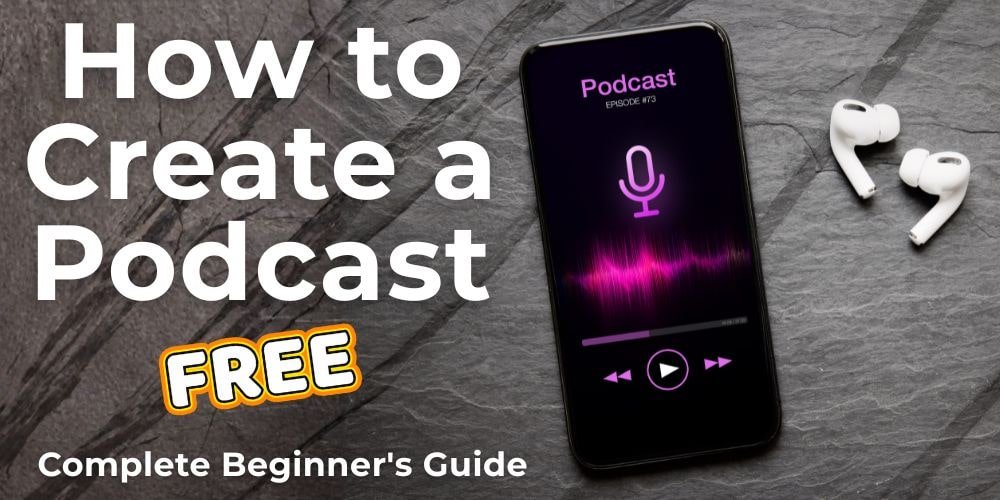Here’s what stops most people from starting a free podcast: they think they need fancy equipment, expensive software, and a hosting plan that’ll cost them every month. So they start researching. Comparing microphones. Reading reviews. Watching setup tutorials. Three months later, they’re still researching and they haven’t recorded a single episode yet.
The truth? Learning how to create a podcast for free is completely possible. No credit card required, no trial periods that’ll charge you later, no hidden fees. Many tools are free, they work well, and thousands of podcasters are using them right now. I’m going to walk you through exactly how to start your own podcast without spending a dollar, step by step.
Table of Contents
- Choose Your Podcast Topic (And Keep It Focused)
- Plan Your Podcast Episode Structure and Format
- Record Your Podcast for Free with Equipment You Already Own
- Choose Your Free Recording Software
- Edit Your Episodes Without Spending Money
- Get Free Podcast Hosting That Actually Works
- Create Free Podcast Artwork (No Design Skills Required)
- Create and Publish Your First Podcast Episode
- Understanding RSS Feeds for Your Free Podcast
- Why Show Notes Matter for Free Podcast Marketing (SEO Benefits)
- Common Mistakes When Creating a Podcast for Free (And How to Avoid Them)
- Promote Your Podcast Without Spending Money
- Keep Your Costs at Zero (And When to Consider Upgrading)
- Ready to Start Your Podcast for Free?
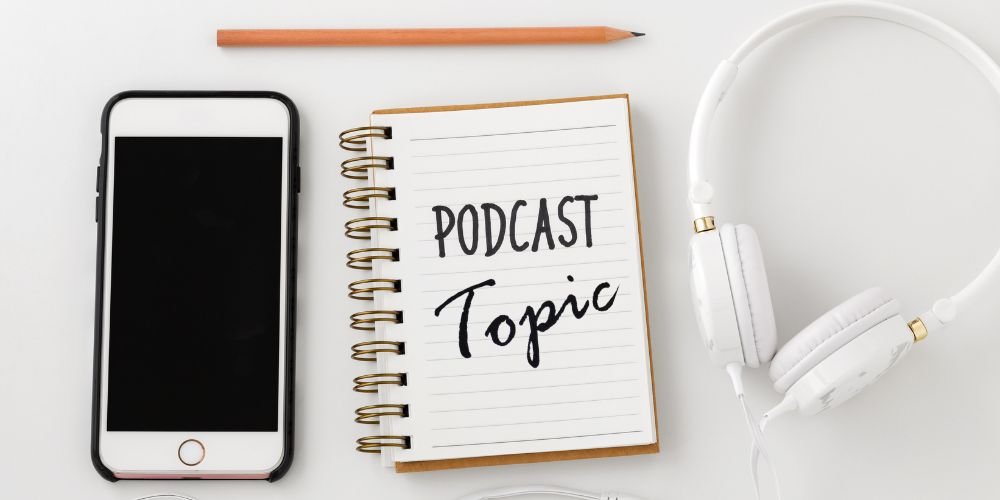
Choose Your Podcast Topic (And Keep It Focused)
Before you record anything, you need to know what you’re talking about. And I don’t mean a vague “business podcast” or “wellness show.” That’s way too broad and you’ll burn out trying to compete with every other show in those massive categories.
Pick something specific. Instead of “fitness,” try “strength training for runners over 40.” Instead of “entrepreneurship,” go with “DIY marketing strategies for graphic designers.” The narrower your focus, the easier it is to find your audience. Once you’ve built an audience in that focused niche, you can expand. But if you start too broad, you’ll never get traction.
Think about what you could talk about for 50 episodes without getting bored. What questions do your friends always ask you about? What could you explain over coffee without needing notes? Start there.
Once you’ve narrowed your niche, try this AI podcast name generator to create a memorable show name that attracts listeners.
Plan Your Podcast Episode Structure and Format
You don’t need a fancy script, but you do need a plan. Walking into a recording session without any structure is how you end up rambling for 40 minutes about nothing in particular.
Start with a simple three-part structure: intro, main content, and outro. Your intro should be short—30 to 60 seconds max. Tell listeners what they’re about to hear and why it matters to them. Skip the long personal stories about your weekend unless they directly relate to the episode topic.
The main content is where you deliver value. Break it into 2-3 segments or talking points so you’re not jumping all over the place. If you’re doing an interview, write out your questions ahead of time and organize them so the conversation flows naturally—start with easy warmup questions, move into your main topics, then close with lighter questions.
Your outro wraps things up. Quickly recap the key takeaway, tell listeners what to do next (subscribe, leave a review, check out your website), and tease the next episode if you already know what it’ll be about.
As for episode length, start with 15-25 minutes. That’s short enough to keep people engaged while you’re still finding your rhythm, and long enough to cover a topic thoroughly. You can always go longer once you’ve built an audience, but beginners often make the mistake of recording hour-long episodes that lose listeners halfway through.
Write this structure down before you hit record. It doesn’t need to be word-for-word—just bullet points of what you’re covering and in what order. You’ll sound way more confident and your editing will go faster because you’re not trying to salvage a disorganized mess.
Record Your Podcast for Free with Equipment You Already Own
You don’t need a $200 microphone. Your smartphone can record perfectly good audio for your first episodes.
Most recent iPhones and Android phones have solid built-in microphones. The voice recorder app that came with your phone? That works fine. Record a test episode and listen back—you’ll probably be surprised by how decent it sounds.
If you want slightly better audio quality without spending much, get a cheap external microphone. The BOYA BY-M1S costs about $20 on Amazon and plugs right into your phone. It cuts down background noise and adds depth to your voice. But honestly? Start with just your phone first. Test it. Many podcasters run entire shows on phone recordings and their listeners don’t complain.
Find a quiet room, put your phone on a stable surface (or hold it steady), and hit record. That’s it. You’re podcasting now.
Want to stay on track while recording? Use the free podcast teleprompter to keep your talking points visible on screen.
Choose Your Free Recording Software
If you’re recording solo on your computer instead of your phone, you’ve got solid free options.
Audacity is the classic free recording software. It’s open-source, works on Mac, Windows, and Linux, and gives you full control over your audio. The interface looks a bit dated, and there’s a slight learning curve, but it’s powerful and completely free forever.
GarageBand is perfect if you’re on a Mac or iOS device. It comes pre-installed, has a clean interface, and includes royalty-free music you can use. The downside? It only works on Apple devices.
If you’re recording remote interviews with guests, Riverside offers a free plan with 2 hours of recording time for up to 10 participants. Another free option is to have a Zoom call while you each record your own audio locally using Audacity. After the interview, your guest sends you their audio file and you edit both tracks together in Audacity. The audio quality is better than just recording the Zoom call, and it’s completely free. That’s honestly all most beginners need.
Not sure which recording software fits your needs? Take our free podcast software finder quiz to get personalized recommendations in under 2 minutes.
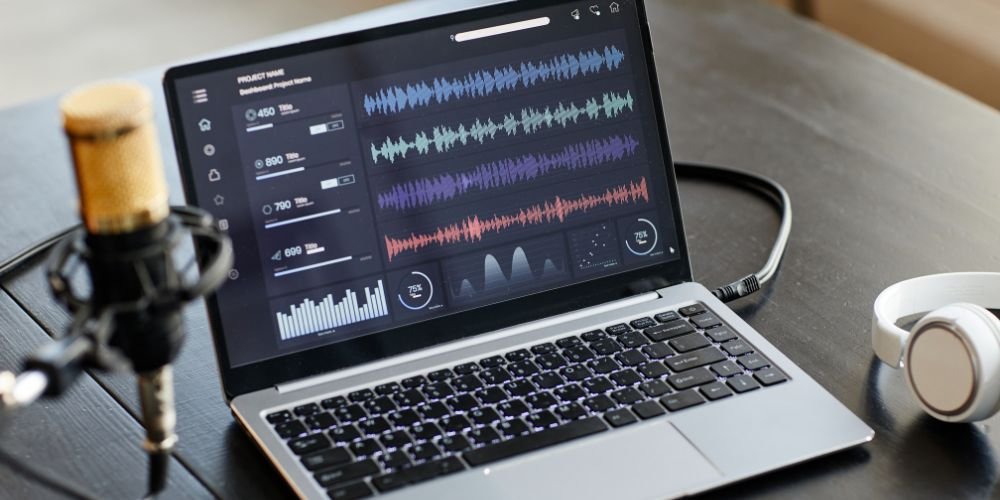
Edit Your Episodes Without Spending Money
Recording is just the beginning. You’ll need to trim awkward pauses, fix volume levels, and maybe add intro music.
Audacity doubles as your editor here. It handles all the basic editing—cutting, trimming, adjusting volume, adding fade-ins and fade-outs. You can stack multiple tracks if you want background music behind your voice.
If you used GarageBand for recording, it works great for editing too—same basic features, cleaner interface.
The editing process feels manual compared to fancy paid tools, but that’s fine when you’re starting out. You learn more about audio editing this way anyway.
Adobe Podcast has a free web-based editor that includes AI enhancement tools. You can clean up background noise and improve audio quality without downloading anything. If you are curious how Adobe Podcast compares to other editing tools, read our complete comparison of 8 podcast software options based on 800+ real user reviews.
Watch out for file size limits and feature restrictions on free plans. But for your first 10-20 episodes? These tools are more than enough.
Get Free Podcast Hosting That Actually Works
This is where a lot of “free” options try to trick you. Some platforms give you free hosting but delete your episodes after 90 days unless you upgrade. Others limit your storage or downloads.
Here are the genuinely free hosts that won’t pull the rug out from under you:
RedCircle offers unlimited hosting and distribution on their free tier. They make money through advertising instead of subscriptions, so there’s no pressure to upgrade. You can even accept listener donations. The downside? You can’t customize ad categories, and you’ll see “Related Shows” at the bottom of your podcast webpage. Minor trade-offs for genuinely unlimited free hosting.
Spotify for Podcasters (formerly Anchor) is another popular option. You get unlimited episodes, unlimited storage, and unlimited bandwidth with automatic distribution to Spotify. The catch? You’re limited to one podcast per account, and you’ll need to manually submit to Apple Podcasts and other directories.
One warning: like many free platforms, Spotify’s customer support can be hard to reach if issues come up, and some users have reported account removals without clear explanation. If you’re comfortable with that uncertainty, it’s a solid option. If you want more reliability and better support access, RedCircle is the safer bet.
YouTube is an often-overlooked free option. Upload your podcast episodes as videos (either actual video or just audio with a static image) and YouTube handles hosting, bandwidth, and discovery completely free. The advantage? YouTube’s algorithm can help new listeners find you, and you can monetize once you hit their thresholds. The downside? YouTube works differently from traditional podcast platforms—it’s great for discoverability, but listeners need to use YouTube rather than Apple Podcasts or Spotify. Some creators use YouTube alongside a traditional podcast host to maximize reach.
Create Free Podcast Artwork (No Design Skills Required)
Your podcast artwork is the first thing potential listeners see, and if it looks unprofessional or confusing, they’ll scroll right past you. The good news? You can create solid artwork without any design skills or budget.
Canva is a solid tool here. It’s free (with optional paid upgrades) and has templates specifically designed for podcast cover art. The dimensions are already set to meet Apple Podcasts’ requirements—minimum 1400×1400 pixels, maximum 3000×3000 pixels, and it needs to be square.
Log into Canva, search for “podcast cover,” and you’ll see dozens of templates. Pick one that matches the vibe of your show. If you’re doing a business podcast, go for something clean and professional. If it’s a comedy show, you can get more playful with colors and fonts.
Keep your design simple. Your artwork needs to be readable even when it’s thumbnail-sized on a phone screen. Use bold, easy-to-read fonts and don’t cram too much text onto it. Your podcast title should be the biggest element—people need to know what they’re looking at immediately.
Avoid using too many colors or busy backgrounds. Stick to 2-3 colors that complement each other, and make sure there’s enough contrast so the text stands out. If you want to add images, Canva has a huge library of free photos and graphics you can use without worrying about copyright issues.
Once you’ve designed your artwork, download it as a PNG or JPG file. Then upload it to your podcast hosting platform when you’re setting up your show. Most platforms let you use the same artwork for every episode, or you can create custom artwork for individual episodes if you want.
Create and Publish Your First Podcast Episode
Here’s a simple workflow that works:
Record your episode using your phone or computer software. Keep it conversational—you’re talking to one person, not performing a speech.
Edit out the mistakes, long pauses, and anything that doesn’t serve the listener. Don’t obsess over making it perfect. Done is better than perfect when you’re episode one.
Export your edited audio as an MP3 file. Most podcast platforms prefer MP3 format at 128kbps or higher.
Upload to your chosen hosting platform. Add your episode title, description, and artwork. Make sure your artwork is at least 1400×1400 pixels—that’s the minimum for Apple Podcasts.
Hit publish and submit your podcast feed to directories. Your hosting platform will give you an RSS feed link. Copy that and submit it manually to Apple Podcasts, Google Podcasts, Amazon Music, and others.
The first episode takes the longest because you’re learning the process. By episode three, you’ll have a rhythm down.
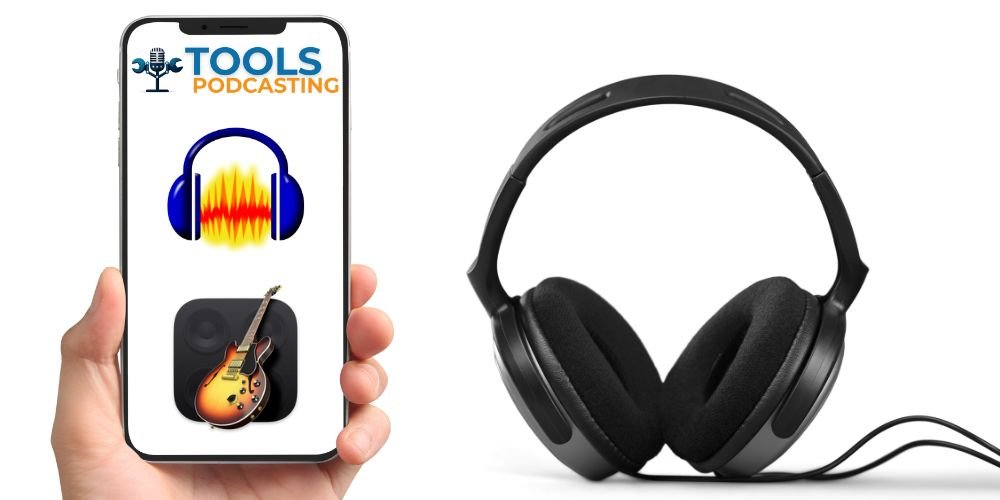
Understanding RSS Feeds for Your Free Podcast
RSS stands for “Really Simple Syndication,” and it’s basically the delivery system that gets your podcast from your hosting platform to everywhere your listeners might be—Apple Podcasts, Spotify, and dozens of other apps.
Think of your RSS feed like a mailing list, except instead of email addresses, it’s podcast directories checking in to see if you’ve published new episodes. Every time you upload a new episode to your hosting platform, your RSS feed automatically updates with that episode’s details—title, description, audio file, publish date, all of it.
Here’s the important part: you don’t have to create your RSS feed manually. Your podcast hosting platform (RedCircle, Spotify for Podcasters, etc.) generates it automatically when you upload your podcast information. It’s all handled behind the scenes.
What you do need to do is submit your RSS feed URL to podcast directories. Your hosting platform will give you a specific web address—that’s your RSS feed URL. You’ll copy that link and paste it into the submission forms for the different platforms where you want your podcast to appear.
Once you submit your feed to a directory and get approved (which usually takes a few days), that directory will automatically check your feed for new episodes. You publish once on your hosting platform, and the episode shows up everywhere your podcast is listed. You don’t have to manually upload to each platform individually.
One warning: if you ever want to switch hosting platforms, make sure your current host allows feed transfers. Some free plans lock your RSS feed to their platform, which means you’d lose all your subscribers if you move. Spotify for Podcasters and RedCircle both allow transfers, so you’re safe with those.
Why Show Notes Matter for Free Podcast Marketing (SEO Benefits)
Show notes are the written descriptions that go with each episode, and most beginners either skip them entirely or write something lazy like “In this episode, we talk about productivity.” That’s a mistake. Good show notes can actually help people find your podcast and give listeners a reason to click play.
First, show notes help with SEO—search engine optimization. Google can’t listen to your podcast, but it can read text. When you write show notes that include relevant keywords and summaries of what you talked about, Google can index that content and show your podcast to people searching for those topics.
Let’s say you did an episode about meal prepping for beginners. If your show notes mention “meal prep,” “healthy eating on a budget,” “batch cooking,” and other related terms naturally throughout the description, someone Googling those phrases might find your episode. Without show notes, you’re invisible to search engines.
Second, show notes give your existing listeners a resource they can refer back to. If you mentioned a book, a website, a statistic, or a specific tool during the episode, link to it in your show notes. Listeners appreciate being able to find that information without having to scrub through the audio trying to remember where you said it.
Third, good show notes help people decide whether to listen. When someone’s scrolling through episodes, the description preview is what sells them. If you write something compelling that tells them what they’ll learn or what problem you’re solving, they’re more likely to hit play.
Your show notes don’t need to be a full transcript (unless you want to go that route). A solid format is: a 2-3 sentence summary of the episode, bullet points covering the main topics you discussed, timestamps for different segments if your episode is long, and links to any resources or websites you mentioned.
Write show notes for humans first, search engines second. Make them useful and readable, and naturally work in keywords related to your topic. That’s the balance that actually works.
Common Mistakes When Creating a Podcast for Free (And How to Avoid Them)
Let’s talk about the things that trip up most new podcasters, because if you know what not to do, you’ll save yourself a ton of frustration.
Recording in bad locations. The number one audio quality killer isn’t your microphone—it’s your recording environment. Don’t record in empty rooms with hardwood floors and bare walls. All that sound bounces around and makes your voice echo. Record in a smaller space with soft surfaces—a closet full of hanging clothes works great, or throw a blanket over your head and the microphone. Turn off fans, AC units, and anything else that hums in the background.
Skipping the editing process. Some beginners think they can record in one take and just upload it. You can’t. Everyone makes mistakes, says “um” too much, or leaves awkward pauses. Always edit your episodes before publishing. Cut out the dead air, the false starts, and anything that doesn’t serve the listener. If editing feels overwhelming, just focus on removing the obvious mistakes first—you’ll get faster with practice.
Making episodes too long right out of the gate. Your first episodes should be focused and relatively short. Listeners haven’t built trust with you yet, so they’re not going to commit to a 90-minute episode. Aim for 15-25 minutes until you’ve got a consistent audience. Once people know they like your show, then you can experiment with longer formats.
Having a boring or overly long intro. Don’t spend five minutes talking about your weekend or explaining your podcast’s origin story before getting to the actual content. People came for the topic in your episode title—deliver that first. Save the small talk for later in the episode when listeners are already engaged, or skip it entirely.
Vague episode titles and descriptions. “Episode 7: Interview with Sarah” tells me nothing. “How Sarah Built a 10K Email List in 6 Months Without Paid Ads” tells me exactly what I’m getting and whether it’s relevant to me. Be specific in your titles and descriptions. Tell people what they’ll learn or what problem you’re solving.
Giving up after 3-5 episodes. This is the biggest mistake of all. Most podcasts quit before episode 10. You’re not going to have hundreds of listeners after your first few episodes—that’s completely normal. Commit to at least 20 episodes before you evaluate whether podcasting is working for you. That’s when you’ll actually have enough data and experience to make a fair judgment.
Not saving your raw audio files. Always keep your original, unedited recordings backed up somewhere. If you need to re-edit later or your exported file gets corrupted, you’ll be glad you have the originals. Create a simple folder system: one for raw files, one for edited files, one for published files.
These mistakes are fixable, and everyone makes them at some point. The key is recognizing them early and adjusting before they become habits that hurt your show’s growth.
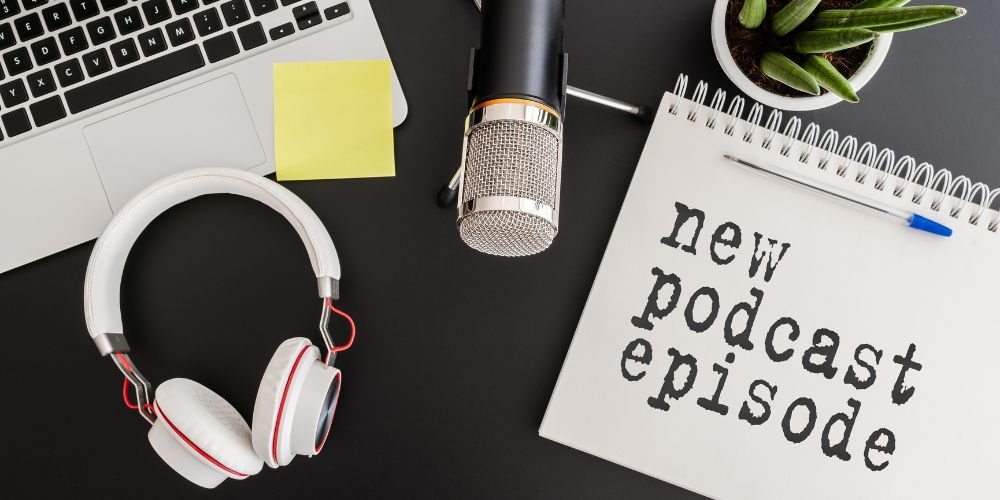
Promote Your Podcast Without Spending Money
You’re not going to wake up to 1,000 downloads without putting in some work. But growth doesn’t require paid ads.
Start by telling people you know. Share your episode on your personal social media accounts. Don’t be weird about it—just mention what you talked about and who might find it useful.
Create short clips (30-60 seconds) from your episodes and post them on TikTok, Instagram Reels, and YouTube Shorts. These platforms favor video, so turn your audio into simple video clips with captions.
Leave your podcast link in your email signature, your social media bios, and anywhere else you’re already showing up online.
Engage with other podcasters in your niche. Leave genuine reviews on their shows, share their episodes when they’re good, and build relationships. Podcasting is collaborative, not competitive.
Ask your early listeners to leave reviews on Apple Podcasts and Spotify. Reviews help with visibility, and each one makes a bigger difference when you’re just starting out.
Join Facebook groups or Reddit communities related to your topic. Don’t spam your podcast link—actually participate and be helpful. When it’s relevant, mention your show naturally.
Keep Your Costs at Zero (And When to Consider Upgrading)
You can realistically run a podcast for free through your first 20-50 episodes. The quality will be good enough, the tools will work, and you’ll learn what actually matters.
But there are a few things free plans can’t give you. Advanced analytics that show exactly where listeners drop off. Unlimited recording hours for long interview episodes. Professional-level editing features that save you hours.
The truth is, if your podcast starts growing and you’re serious about it, you’ll eventually want to upgrade something. Maybe it’s a better microphone. Maybe it’s a paid hosting plan with better features. Maybe it’s editing software that removes filler words automatically.
Start free. Learn what you’re doing. Figure out if podcasting is actually for you. Then decide if and where to invest money based on what’s holding you back.
Ready to Start Your Podcast for Free?
Creating a podcast for free isn’t just possible—it’s actually a smart way to start. You’re not locked into expensive tools you don’t understand yet. You’re not wasting money before you know if you’ll stick with it.
Pick your topic, grab your phone or computer, choose a free hosting platform, and record your first episode this week. Not next month. Not when everything’s perfect. This week.
Your first episode will be rough. That’s fine. Your tenth episode will be significantly better. And the only way to get there is to start.

